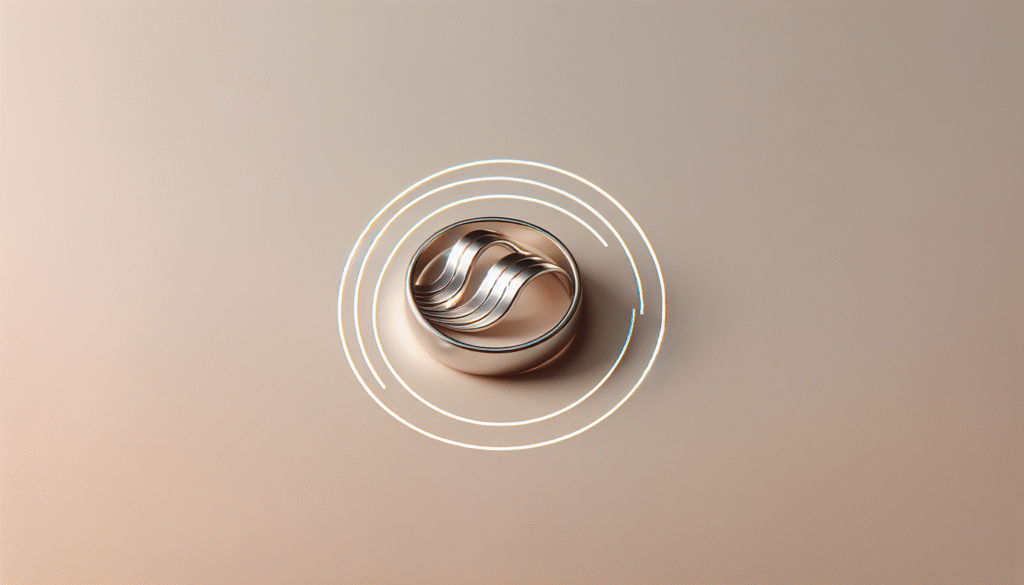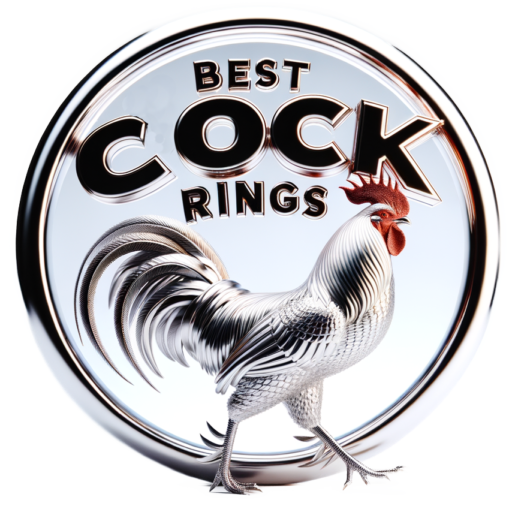Have you ever thought about the implications of wearing a cock ring if you have a history of testicular cancer? It’s an important question and deserves careful consideration. Let’s navigate through this topic together to ensure you have the information and understanding you need to make informed decisions that prioritize your health and comfort.

Understanding Cock Rings
Before addressing the core question, it's essential to first understand what a cock ring is. Although widely recognized in sexual wellness discussions, not everyone might be familiar. Cock rings, often circular in design, are devices worn around the base of the penis. They're made from various materials including silicone, metal, or rubber. The primary goal is to restrict blood flow from leaving the erect penis, potentially enhancing erections and prolonging pleasure during sexual activities.
How Do They Work?
Cock rings work by constricting blood vessels. When worn properly, they retain blood in the penis, thereby maintaining an erection. This can be particularly beneficial for those seeking prolonged sexual performance. However, improper use can lead to potential risks, such as discomfort or injury. Understanding their correct usage is crucial to ensuring safety.
Types of Cock Rings
With several types available, understanding which might work best for you is vital. Here's a quick breakdown:
| Type | Description |
|---|---|
| Stretchy Rings | Made from flexible materials like silicone, offering ease of application |
| Adjustable Rings | Feature straps or buckles, allowing size adjustments for a snug fit |
| Metal Rings | Rigid and non-stretchy, often suited for advanced users due to their firmness |
Each type offers different benefits and challenges. Opting for a material and design that suits your comfort and experience level can greatly influence overall satisfaction and safety.
Testicular Cancer: A Brief Overview
To effectively evaluate whether you should use a cock ring after experiencing testicular cancer, it's important to first understand some basics about the condition itself. Testicular cancer arises in the testicles, part of the male reproductive system responsible for producing sperm and hormones like testosterone.
What Causes Testicular Cancer?
Several factors could increase the risk of developing testicular cancer. These include undescended testicles, family history, and even demographic factors such as age and race, with younger men and white men statistically having a higher incidence rate. Though it's unsettling, understanding these factors can facilitate more informed health choices.
Symptoms to Watch For
Early detection is vital when addressing testicular cancer. Symptoms might include lumps in the testicles, a feeling of heaviness in the scrotum, or sudden collection of fluid. Sore groin areas or discomfort may also indicate potential issues. By familiarizing yourself with these, you can be proactive in seeking medical counsel when necessary.
Treatment and Remission
Modern treatments have significantly bolstered recovery and survival rates. Options include surgery, radiation therapy, and chemotherapy, depending on the stage and type of cancer. Encouragingly, many men reach remission and continue to live healthy lives. Recovery times and post-treatment experiences vary by individual, emphasizing the necessity for personal medical advice from your healthcare provider.
Can You Wear a Cock Ring Post-Cancer?
This is the question at the heart of our discussion. You might feel a mix of apprehension and curiosity when it comes to using a cock ring after having testicular cancer. It's crucial to balance sexual health desires with caution after treatment and remission.
Medical Consultation: The First Step
It's highly advised to consult your healthcare provider before using a cock ring. They bring specialized knowledge about your medical history and can offer personalized insights. After cancer treatment, certain areas may still be sensitive or healing. Your doctor can help evaluate whether it's safe for you to use a cock ring and might even suggest types or brands safer for post-cancer use.
Personal Comfort and Readiness
Assess your comfort levels and readiness. Recovery is not just physical; it's emotional too. Feeling confident and secure in your recovery process is essential. Trying out something new, like a cock ring, should harmonize with your readiness. Consult with yourself as well as with medical professionals before diving into using sexual wellness products post-cancer.
Potential Risks and Concerns
Be aware of potential risks. If you're still in recovery or dealing with residual symptoms, using a cock ring might result in discomfort or exacerbate issues related to surgery or past radiation. This is another aspect where personalized medical advice is invaluable. Understanding your risks and having a plan for addressing any arising concerns will ensure your safety comes first.
Benefits of Mindful Sexual Wellness
If you decide, with your doctor's approval, to use a cock ring, there can be several benefits. Sexual wellness is an integral aspect of overall health, contributing not only to physical well-being but emotional and mental health too.
Enhanced Pleasure and Intimacy
Using a cock ring, when suitable and safe, could enhance sexual pleasure and increase intimacy with your partner. Sharing new experiences often strengthens relational bonds, and exploring sexual wellness products is no exception.
Boosting Confidence
Post-cancer treatment can sometimes knock your confidence. Feeling secure and empowered in your sexual experience can significantly contribute to rebuilding self-esteem and improving body image views that may have been altered during treatment.
Enhanced Sexual Awareness
Exploration of new areas can lead to greater sexual self-awareness. Understanding what you enjoy and what works for you is a liberating aspect of sexual health. When you approach an experience or product like a cock ring with openness and mindfulness, it might surprise you by uncovering new layers of your own sexual identity.

Safety Tips for Using a Cock Ring
If you and your doctor decide a cock ring is an appropriate choice for you, ensuring safe use is the next priority. Keeping these tips in mind will help maintain a balance between pleasure and safety.
Choose the Right Size and Material
Especially for those new to cock rings, opting for adjustable or stretchy designs can minimize risks of injury or discomfort. Measure to find your correct size, and experiment with various materials until you find one most comfortable for you.
Time Limits Matter
Avoid wearing a cock ring for extended periods. Generally, around 20 to 30 minutes is advisable. Extended use can impair blood circulation and result in unwanted side effects, including pain or even injury.
Monitor for Discomfort
Pay attention to your body’s signals. If you experience numbness, color changes, or discomfort, immediately remove the cock ring. Your in-person comfort should be as prioritized as your overall safety.
Recovering Sexual Confidence
Sexual health discussions post-cancer often highlight challenges many face in regaining pre-treatment confidence levels, a natural concern given the physical and emotional toll treatment can entail.
Open Communication with Yourself and Partners
Communicating openly with your partner (if applicable) about your health journey can alleviate stress and promote understanding. Sharing your feelings and desires is pivotal in fostering a nurturing situation for you and your partner.
Therapy and Support
Seeking therapy or counseling can facilitate personal healing and acceptance post-cancer. Dedicated therapists can walk you through emotional hurdles and guide you in reintegrating adjusted sexual health aspects into your life confidently.
Continued Medical Check-ups
Regular medical follow-ups remain vital for your overall wellbeing. They ensure any remnant issues are monitored, providing you with the reassurance needed when considering adding elements like a cock ring into your routine again.

Navigating Personal Preferences
Once you've received the green light from your doctor and assessed your comfort, exploring personal preferences becomes a rewarding journey. Understanding your preferences ensures a balanced integration of new experiences that foster positivity and joy in sexual engagements.
Trial and Error
Approaching with a trial and error mindset invites freedom to explore what aligns with your expectations and desires. Understand that finding your comfort zone with new products is okay and part of the exploration journey.
Partner Feedback
Discussing comfort levels and preferences with your partner can enrich your shared experiences. Encouraging open feedback ensures both parties feel respected, involved, and satisfied with shared experiences.
Respecting Your Body and Journey
In your quest to explore sexual wellness post-cancer, remaining respectful and patient with your body’s journey is invaluable. Remember, opting for added products or experiences remains a choice and not a necessity.
Patience
Healing and reacquainting with your body isn’t bound by timelines. Embrace patience as a companion as you navigate integrating something new, like a cock ring, into your life.
Self-care Prioritization
Above all, prioritize self-care. Choose endeavors and products that align with enhancing your body’s needs and emotional wellness. Protect your healing journey and nurture it with choices that respect your body’s magnificent resilience.

Conclusion
The decision to wear a cock ring after having a history of testicular cancer demands more than a simple yes or no—it's a blend of awareness, consultation, exploration, and self-compassion. Remember that expert guidance from your healthcare provider is your best ally. Balancing curiosity, safety, and self-awareness will navigate you toward reshaping your sexual wellness in ways that feel right for you. Embrace this unique journey with optimism, curiosity, and steadfast awareness, welcoming each decision as an opportunity to honor your unique healing adventure.

